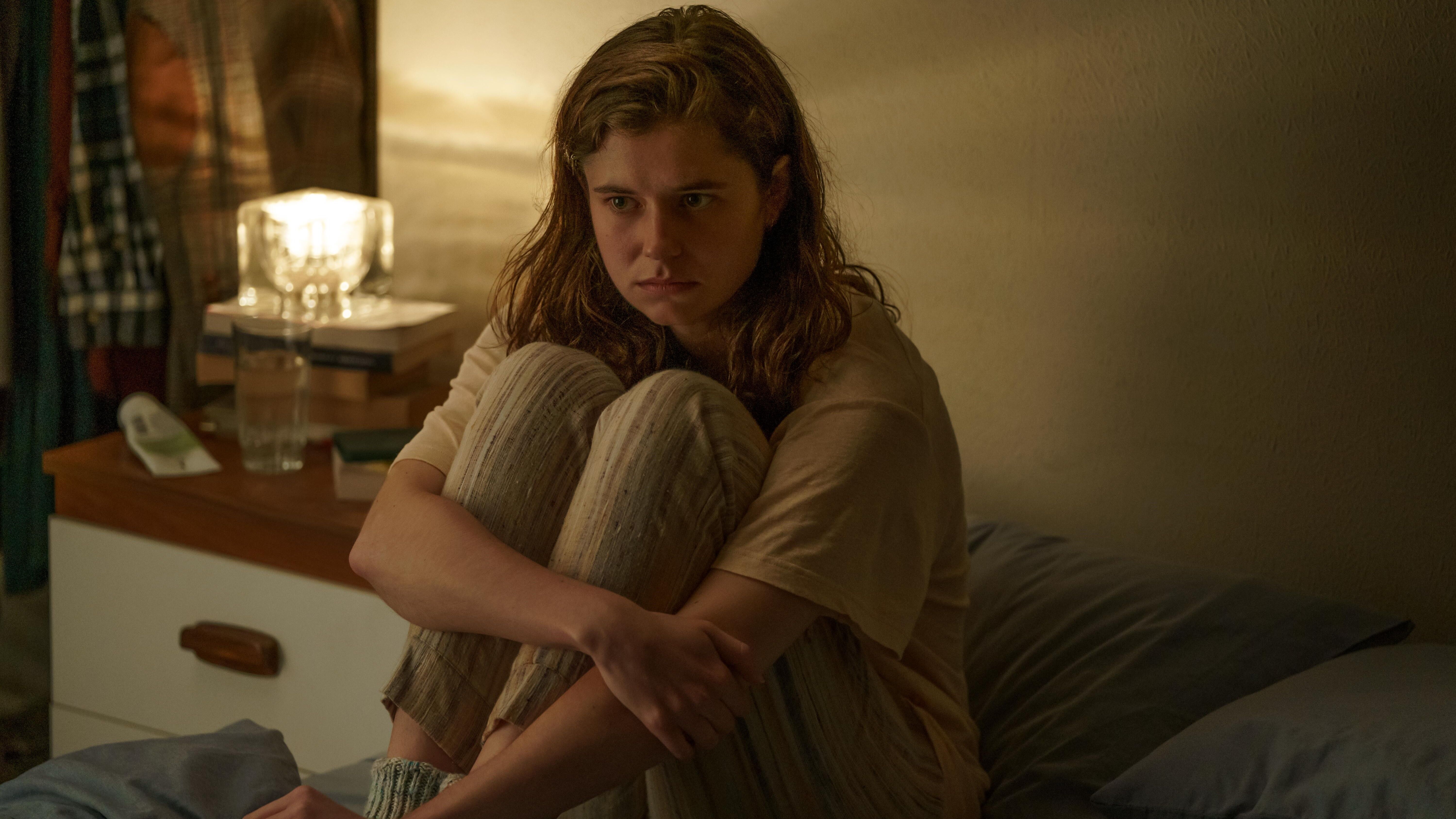As far as book to film adaptations go, the 2022 BBC miniseries Conversations With Friends stays refreshingly true to the source material with only a few minor alterations. Small changes like Bobbi’s (Sasha Lane) nationality changing from Irish to American, turning emails into texts, and slight differences in character interactions change the dynamic between them only slightly for the most part, and the plot is largely the same: A love square between four complicated people who gradually try to find their ways again.
The faithful adaptation doesn’t just get most of the facts right. The novel is an easy read, fittingly written in a conversational tone from the point of view of Frances (Alison Oliver). Dialogue is an important part of the book, but author Sally Rooney made the interesting and notable decision to leave out quotation marks, merging the plot seamlessly with discussions between characters. The dialogue and prose both flow naturally, and that smooth flow from plot beat to plot beat is mimicked in the TV series as well.
Each episode begins and ends without much ceremony, getting right into the action and ensuring that each episode feeds into the next with as little interference as possible. Part of this decision may be due to its platform; Hulu is a streaming service that is no stranger to binge-watching. Just as the book makes it easy to turn the next page, the TV series presents the story in a way that is highly bingeable. However, as with any book-to-film adaptation, changes need to be made to account for the different format. While the short openings, abrupt endings, and ethereal transition scenes that focus mainly on Frances walking through her setting all contribute to the realistic tone and smooth flow of the story, some parts of the book don’t necessarily translate to the screen.
Rooney made several very specific decisions when choosing the storytelling techniques for the novel. Being in Frances’ first-person point of view means that the audience gets to live inside her head and know her every thought – and because the story is told in the past tense, the reader also has access to Frances’ insights after the events of the story occur. The TV series doesn’t have the advantage of giving the audience all this information in a seamless way. Arguably, the simplest way to add Frances’ insights and inner monologue is to add narration over the events of the story, and there are numerous scenes that exist to convey the passage of time that could have been paired with these narrations. Voice-overs like this can become stale if not done effectively and carefully, so it makes sense that the TV series opted not to include them unless they are of Frances' writing.
However, leaving the show without any direct link to how Frances is feeling can be confusing, especially during long moments of silence during which some form of narration could have been included. Silence can be a powerful tool in TV and film, but too much of it without enough subtext can leave a scene feeling more aesthetically pleasing than enlightening. Because of the disadvantage of not having a couple of hundred pages of Frances’ inner thoughts, the subtle nuances of the main character are conveyed almost entirely through Frances’ writings and the micro-expressions and acting talent of Alison Oliver. This means that, while the book presents Frances in an easy-to-read way (her narration can be just as blunt and in-your-face as Bobbi’s dialogue), the show challenges the audience to look deeper into how Frances acts and reacts in order to understand her completely. It results in an interesting and positive change from the book.
On the other hand, the nature of Frances’ character and her lack of vulnerability at the beginning of the story necessitates a certain closed-off attitude that can be hard to identify with when it’s seen only on-screen and from the outside. Her obvious discomfort in crowds or groups of people makes her answers short, and while this can be telling, it also limits what the audience is able to glean about her. Pair this with Nick’s (Joe Alwyn) similar emotional state, as well as the passivity that is stated again and again to be his character flaw, and the interactions between Frances and Nick seem less romantic and more stilted and awkward. Granted, the chemistry between these two characters improves during the course of the series as they open up to each other and to Melissa (Jemima Kirke) and Bobbi as well. All four show vast improvement in opening up about their vulnerabilities, especially in such a complicated and messy love square, but the type of people that Frances and Nick are make it difficult to identify with them through limited dialogue alone.
Dialogue can be extremely powerful in the novel, following the theme of communication, and not just among the four main characters. Frances’ long, isolated walks and her tendency to hang out mostly with Bobbi make her world seem smaller in the series than it does in the book. The interactions between Frances and her father are especially raw and realistic due to Sally Rooney’s talent for writing dialogue. Compared to the novel, the TV series handles its dialogue in a softer and safer way on the screen than the blunt and sometimes harsh dialogue on the page. While Bobbi is one character who keeps her sharp tongue, the subtle nuances of Sally Rooney’s dialogue are sometimes lost in other characters, especially without Frances’ first-person POV.
For such a faithful adaptation, the small changes that are made in this series stay in line with the source material but in ways that don’t always match up tonally. Separately from the book, it definitely has its own style, so comparing the two isn't necessarily fair. The book and the series are two very similar stories – while both eventually hit an emotional mark, the book reaches it far quicker and with more impact than the series. Nevertheless, both do interesting work with the core premise and characters.



